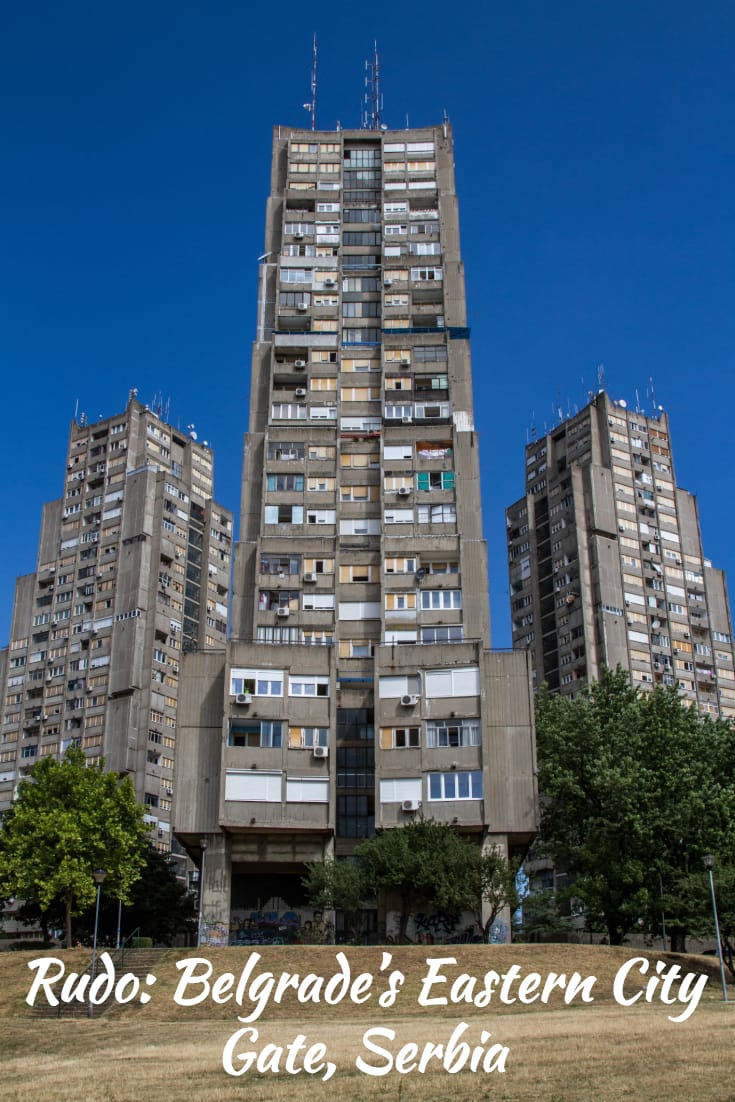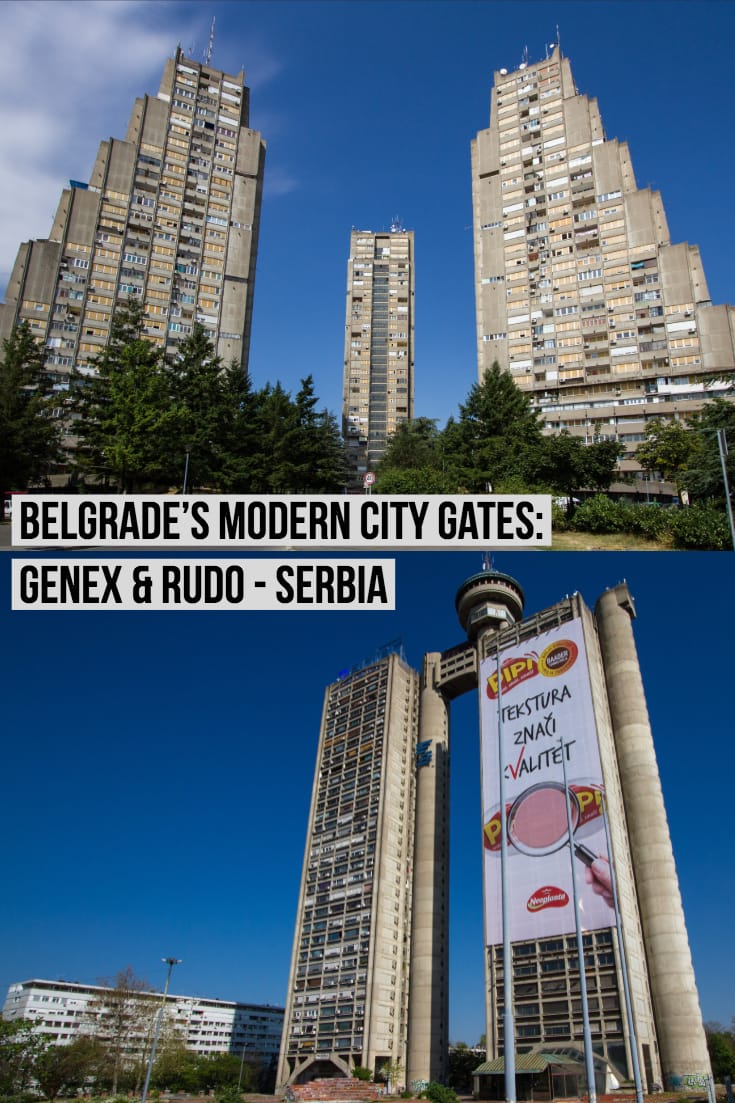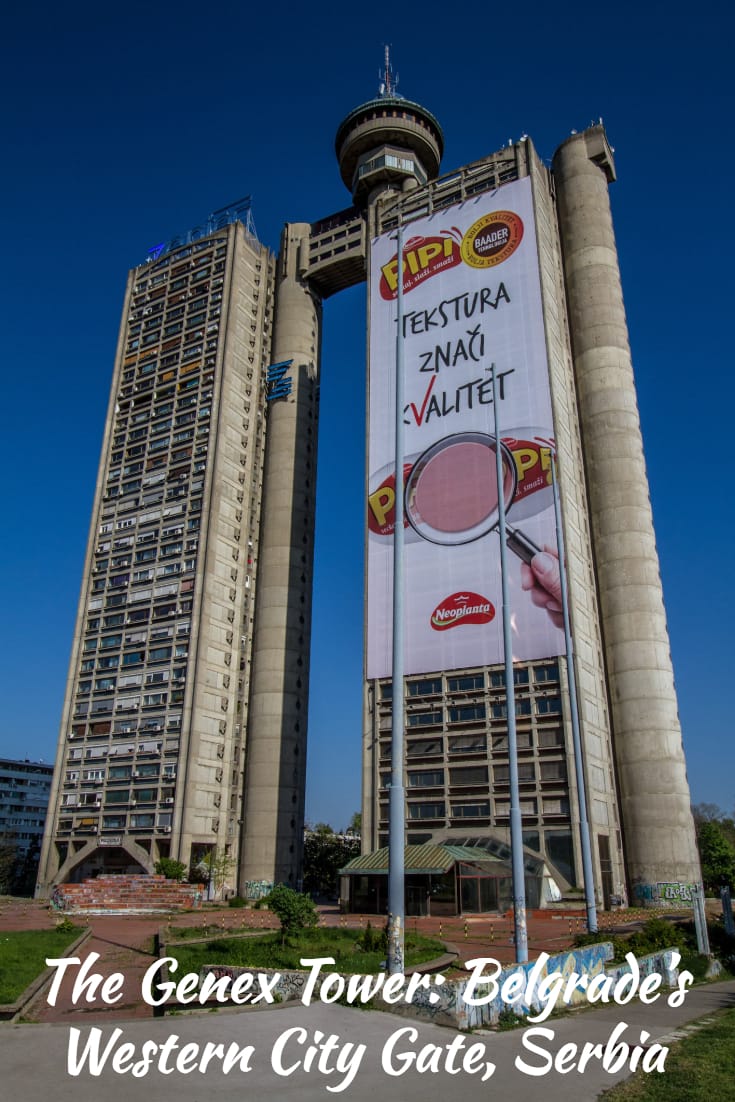The Genex Tower and Rudo: iconic tower blocks in the Serbian capital
When I first heard about Belgrade’s Western and Eastern City Gates, I conjured images of ancient, crumbling gates that were more symbols of the city rather than anything more practical or significant. Serbia’s capital is very old and, of course, it does have the remains of city entrances that fit this description, including one that is nearly 2000 years old and dates back to the time of the Romans. But, on our last visit to Belgrade, Kirsty and I weren’t looking for gates that date back that far. In fact, we weren’t looking for gates in the truest sense of the word at all.
Sitting at opposite ends of Belgrade, the Western and Eastern City Gates are both situated close to the longest motorway in the country (A1/E75) and, if you are entering the capital via this route from either direction, you won’t fail to notice one or the other because both city gates are in fact enormous sky-scraping tower blocks that dominate the horizon in their respective parts of the city.
Both skyscrapers were erected in the 1970s when Belgrade was the capital of a united Yugoslavia and, apart from the obvious residential and business reasons for their construction (read on), these brutalist landmarks served as an impressive reminder to anyone arriving in the city that Yugoslavia, and in particular its capital, was an up and coming commercial and political European power to be reckoned with.
Western City Gate: Genex Tower
Like most, I suspect, with an interest in these buildings, we began our exploration with a visit to the Western City Gate. Located in the heart of the post-war, planned municipality of Novi Beograd (New Belgrade), the Western City Gate comprises two towers connected via a two-storey walkway: one tower for commercial purposes; the other residential. Hardly anyone calls it by its proper name. Rather, it is more commonly known as the Genex Tower after the now-defunct Yugoslavian trading company that once resided in the right-hand commercial tower that is now unoccupied and often draped in huge advertising banners.
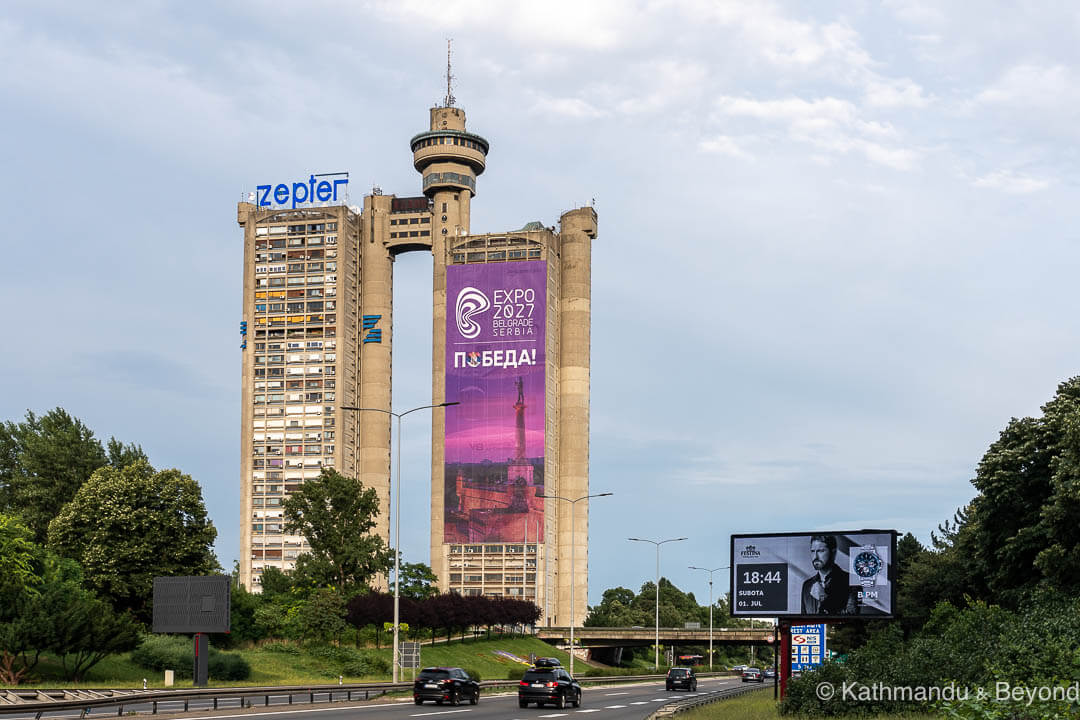
Facts about Belgrade’s Western City Gate (Genex Tower)
The Western City Gate was designed by Serbian-born architect, Mihajlo Mitrović and constructed between 1977 and 1980.
At its tallest, it is the same height as the nearby Ušće Tower (115m) but the latter is officially Belgrade’s tallest building because the radio mask mounted on top of it is higher than the one positioned on the roof of the Genex Tower.
Although the commercial tower is now unoccupied, the other tower is not. It was created for residential living (apartments) and is still used for that purpose.
The residential tower is 30 storeys and the commercial one is 26 storeys in height.
There is a revolving restaurant on the top of the Genex Tower but it has never rotated as the correct mechanisms were never fitted. Like the commercial tower, the restaurant is no longer in use.
The Genex Tower is often compared to the 31-storey Trellick Tower in West London and, given that the latter was constructed first (1972), there is a strong possibility that Mitrović was influenced by the design of Ernő Goldfinger’s archetypal high-rise housing estate.
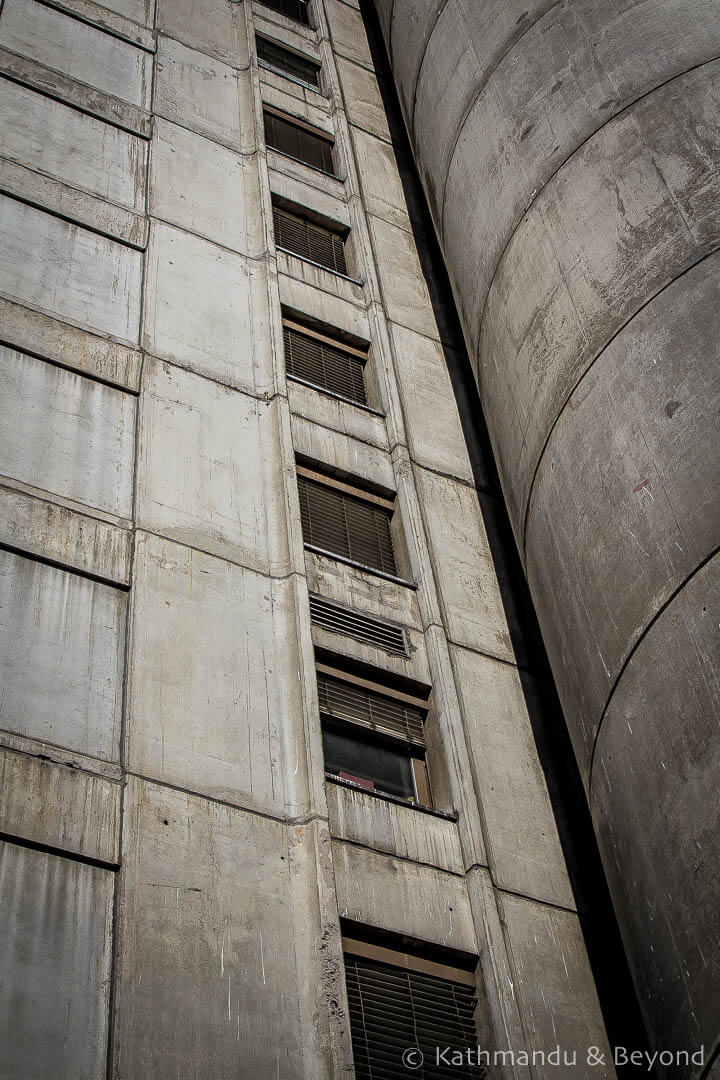
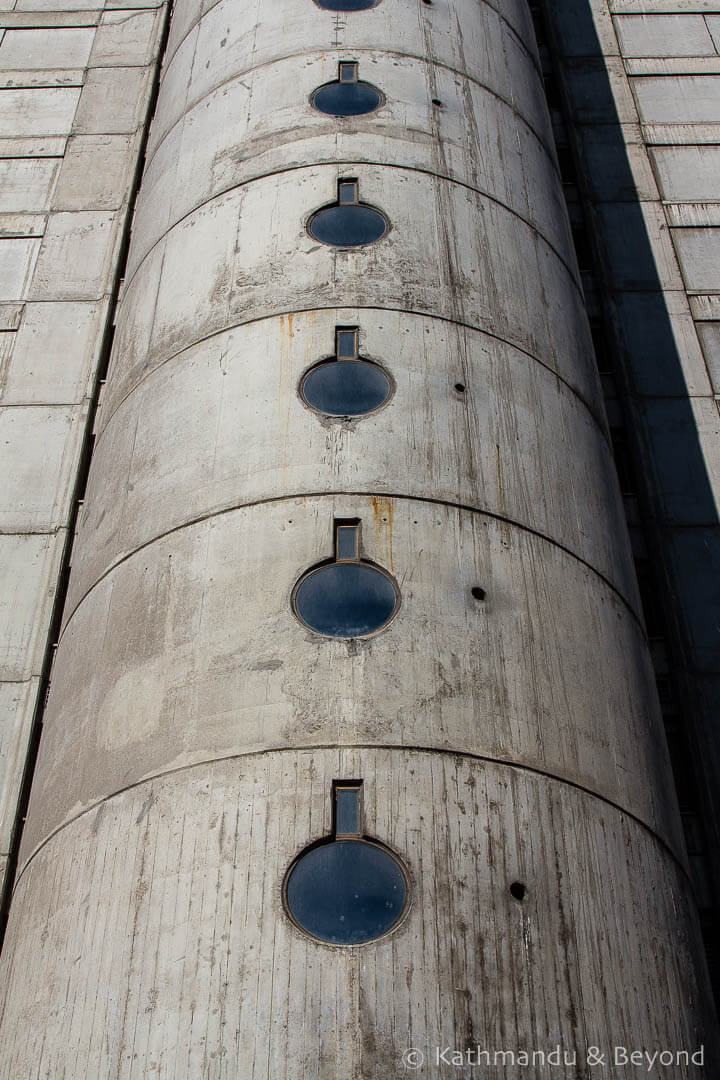
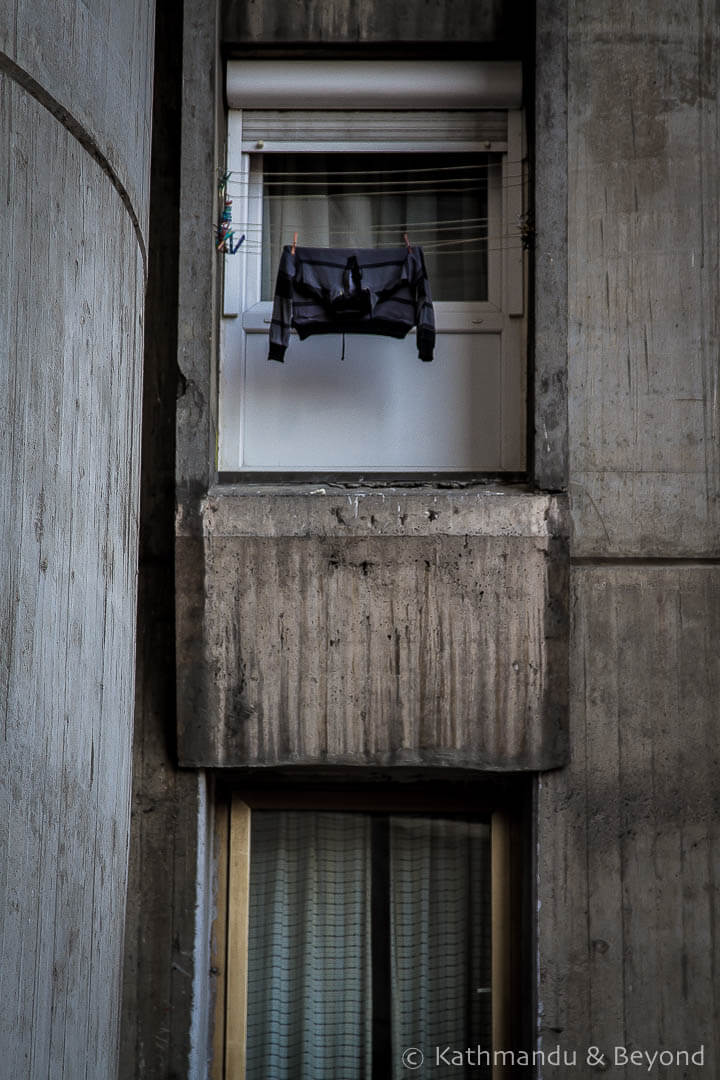
Western City Gate (Genex Tower)
It doesn’t take long to see the Genex Tower. If you approach the entrance to the commercial tower the security guard will shoo you away and, unless you are staying there, or invited in by a resident, the interior of the residential tower is key-code protected and you cannot just wander in at will.
We still managed to spend well over an hour in the proximity of the towers when we visited, however. The sheer scale of the structure and the abundance of raw concrete had us transfixed and we ended up taking more photographs than we actually needed. We Kodak-blitzed the place!
The public areas surrounding the towers were rundown and neglected. A pizzeria located at ground level on the backside of the building was no longer fit for purpose and the only life we saw, apart from people heading in and out of the entrance to the apartments, was a small convenience store and a hairdressing salon. There was graffiti also and, generally, the whole place had an air of dejection.
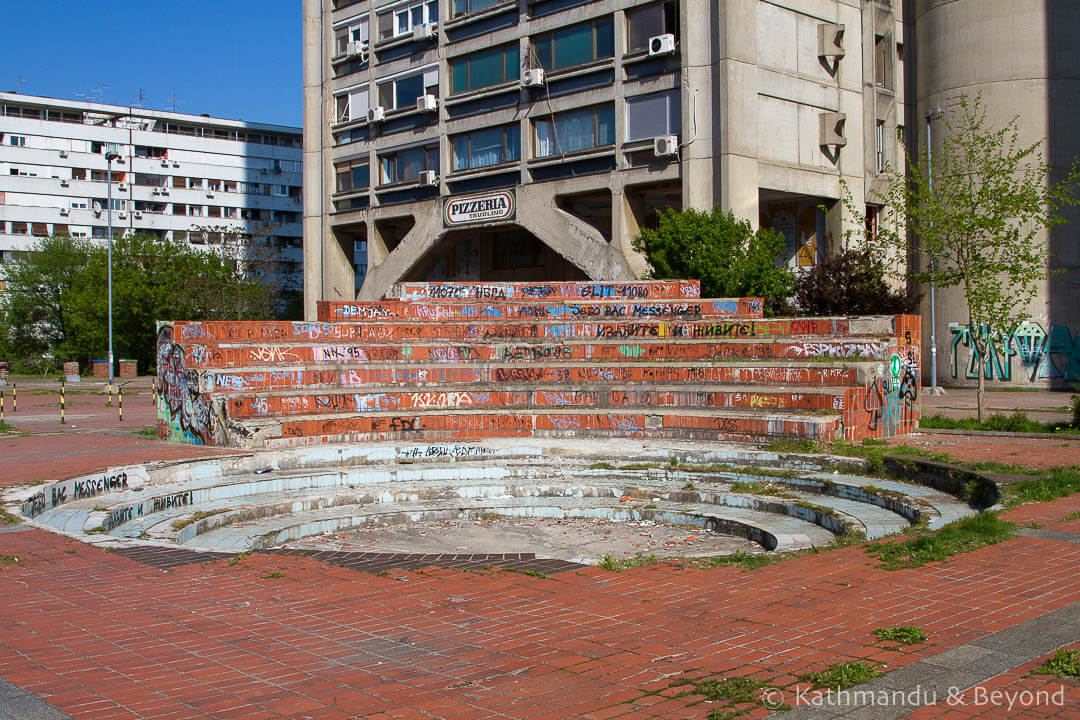
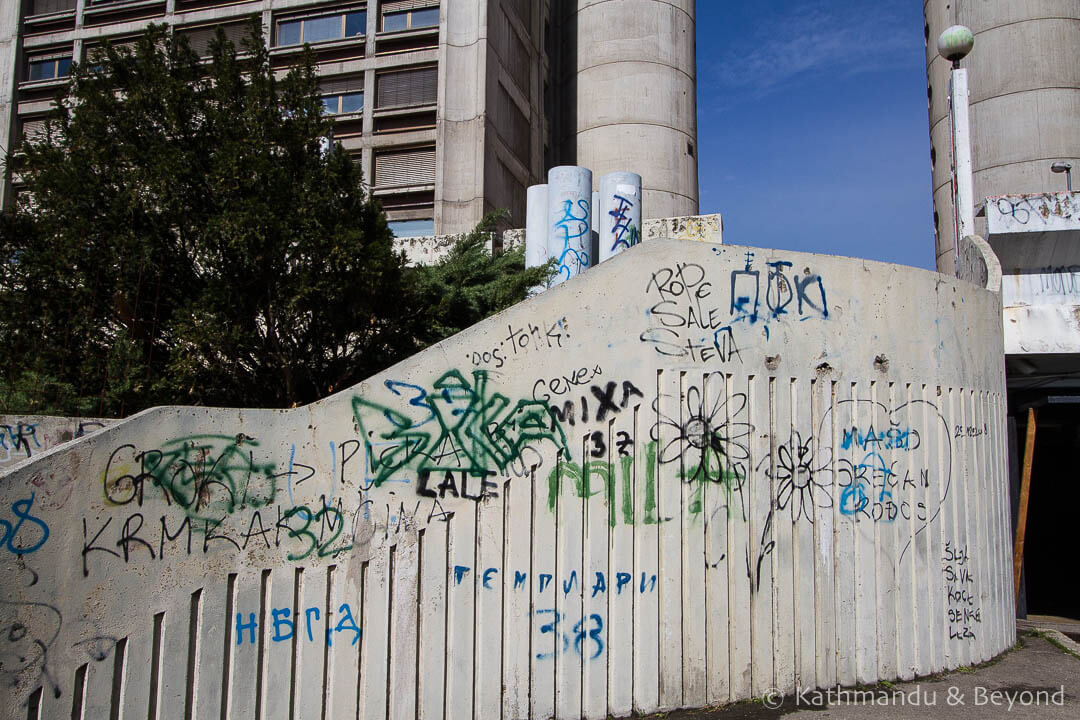
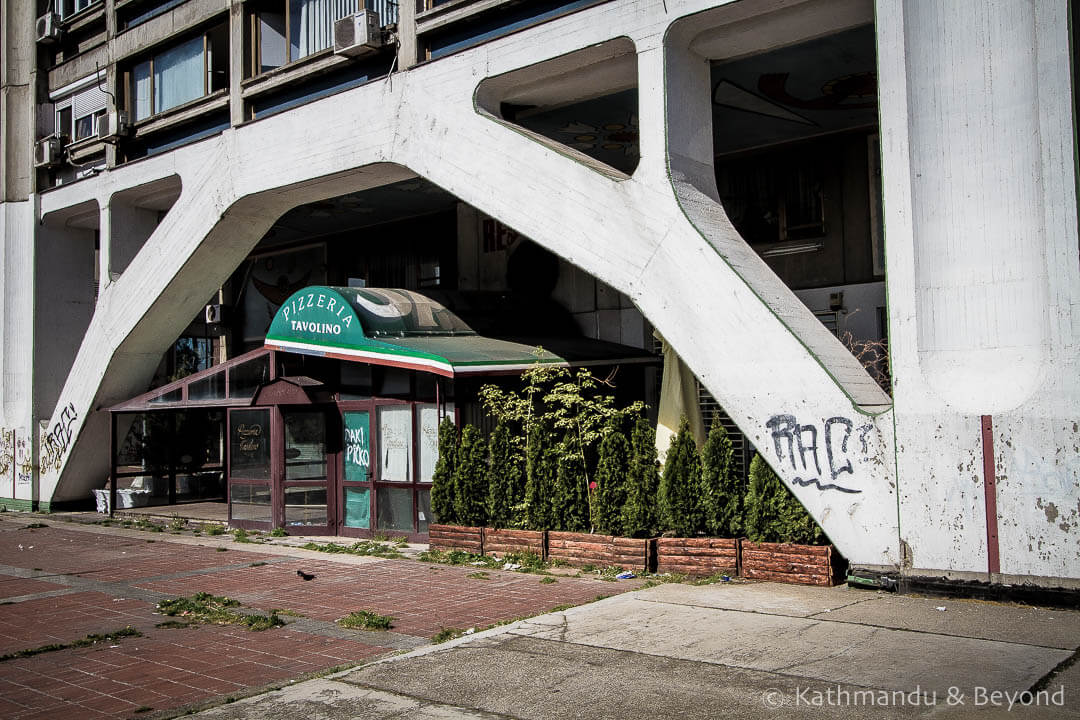
Western City Gate (Genex Tower)
This perceived air of abandonment was quite noticeable to us. We had spent most of the day in New Belgrade, admiring many more of its brutalist and modernist buildings and, overall, the area felt busy and full of life but as soon as we reached the Genex Tower, the atmosphere changed and a tumble-weed sensation took over. Like so many structures of the time, the Pyramid of Tirana for example, many people see the towers as an eyesore, or worse, as a reminder of a past they would rather forget.
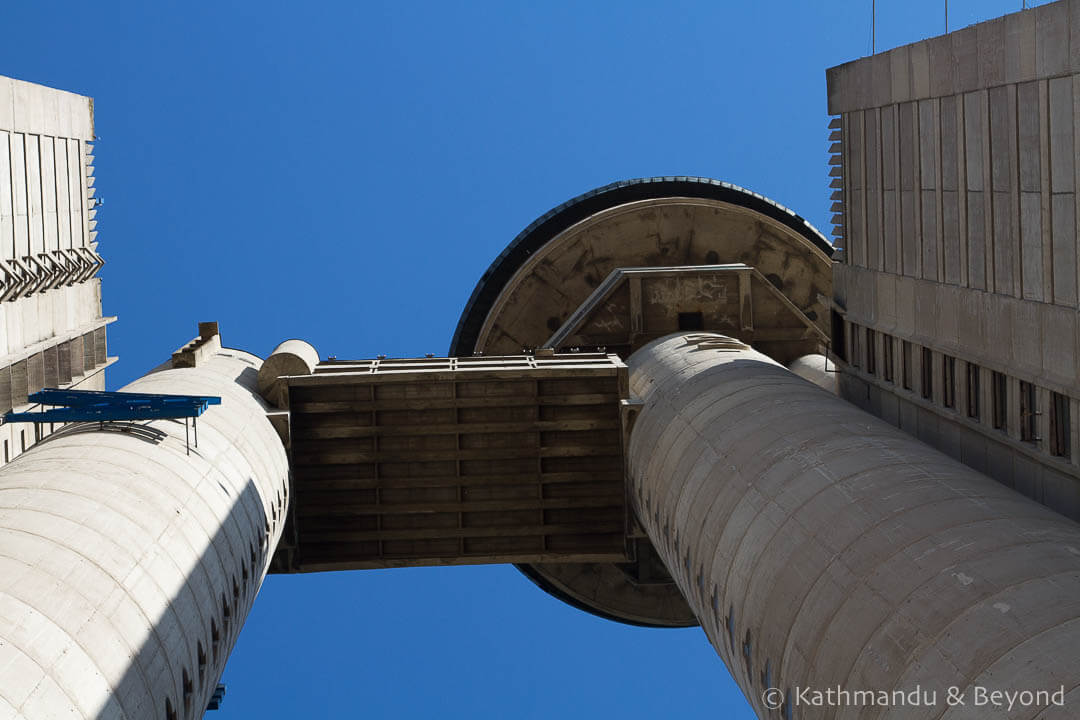
It made me wonder what the future holds for the Genex Tower. Half of it is empty yet, the other half is home to a tiny percentage of Belgrade’s one million-plus population. Although I’ve not read anything that suggests the towers will be demolished, equally, I cannot find any information that implies they are going to be revamped and injected with a new lease of life any time soon. I guess there are people out there who have plans for this Blade Runner-esque tower block but for the moment it remains in a state of limbo and a “what the hell is that?” moment for those looking out of the right-hand window during the drive into the city from Nikola Tesla Airport.
Eastern City Gate: Rudo
Located in Belgrade’s spread out Konjarnik neighbourhood, the Eastern City Gate is officially known as Rudo and is nicknamed the Three Sisters. Given the fact that there are three towers, it’s obvious how these skyscrapers acquired their less formal title. As for the official name, Rudo is a town in what is now the eastern Republic of Srpska, part of Bosnia and Herzegovina. The supervising architect on the project, Dragoljub Mićović, was born in Rudo and that’s how the tower blocks acquired their name. I think it is also interesting that the town was the birthplace of the much respected 1st Proletarian Brigade, the first sizeable resistance unit to be formed by the Yugoslav Partisans during the Second World War. Without a doubt, Marshall Tito who, by the mid-1970s was coming to the end of life (he died in May 1980), would have connected the two and been happy to sanction what, in my opinion, is otherwise a rather egotistical name for a block of flats.
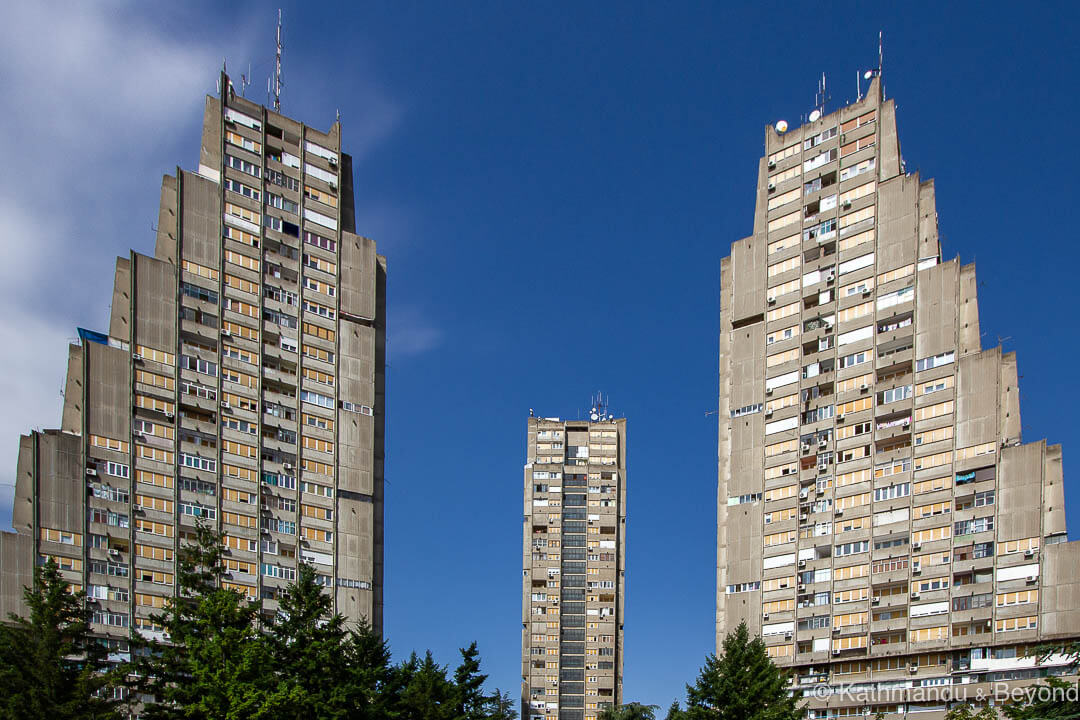
Facts about Belgrade’s Eastern City Gate (Rudo)
Work on the towers began in 1973 and lasted until 1976.
As well as Dragoljub Mićović, the supervising architect on the project, there was Vera Ćirković, the design architect and engineer, Milutin Jerotijević.
Each of the three buildings is 28 storeys and contains 190 apartments. Altogether, Rudo can accommodate up to 2000 people.
The skyscrapers were constructed on a circular base, meaning that whatever angle you look at them, it always appears that one is between the other two.
The facades of the three buildings were never fully completed, to the extent that there are serious structural issues with them today. Partial repairs were carried out at the turn of the millennium and continued until 2008 but thereafter very little was done to preserve the towers and large pieces of concrete, up to 60kg in weight, have been known to fall away. An estimated €4m is required to make the buildings structurally sound, as well as deal with internal issues such as old plumbing and faulty wiring, and, although the residents have pulled together and crowd-funded in order to raise money, they are nowhere near the target and the three towers remain in poor condition.
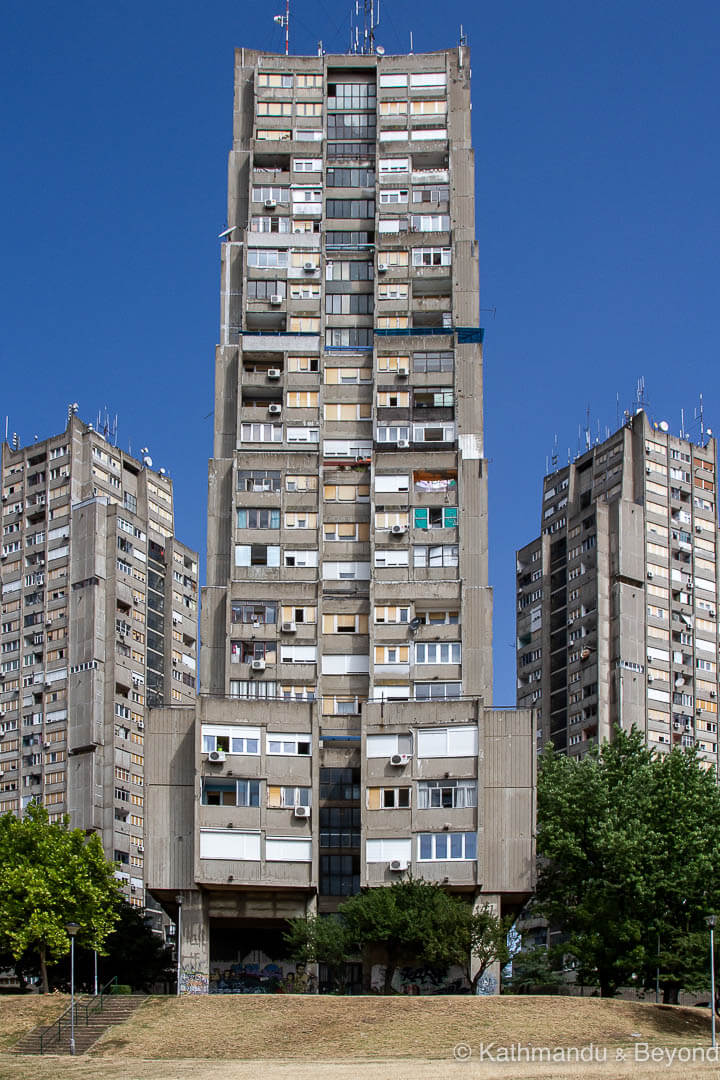
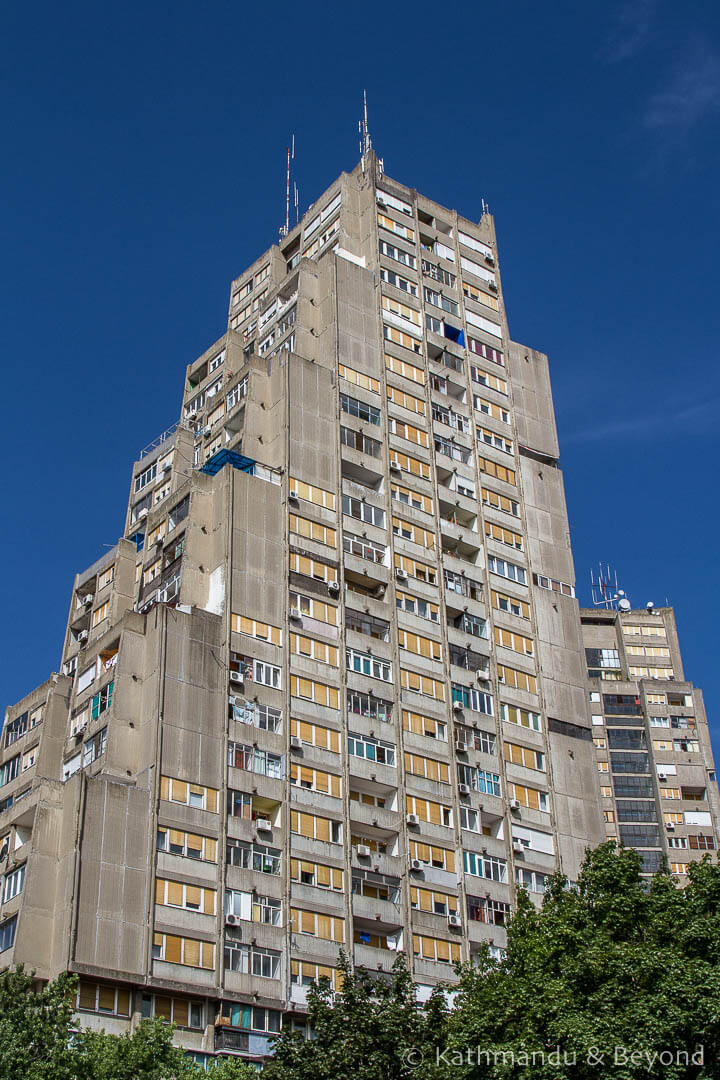
Eastern City Gate (Rudo)
Rudo is completely residential and, despite the problems cited above, for us, it instantly felt more appealing than the Genex Tower. We saw plenty of people in the public space that surrounds the structures: children playing, mothers with pushchairs and residents stopping and talking to one another. We saw flower boxes on window ledges and the communal green space was reasonably well kept. We visited both places on an equally sunny day but Rudo definitely felt less forlorn and a nicer place to be.
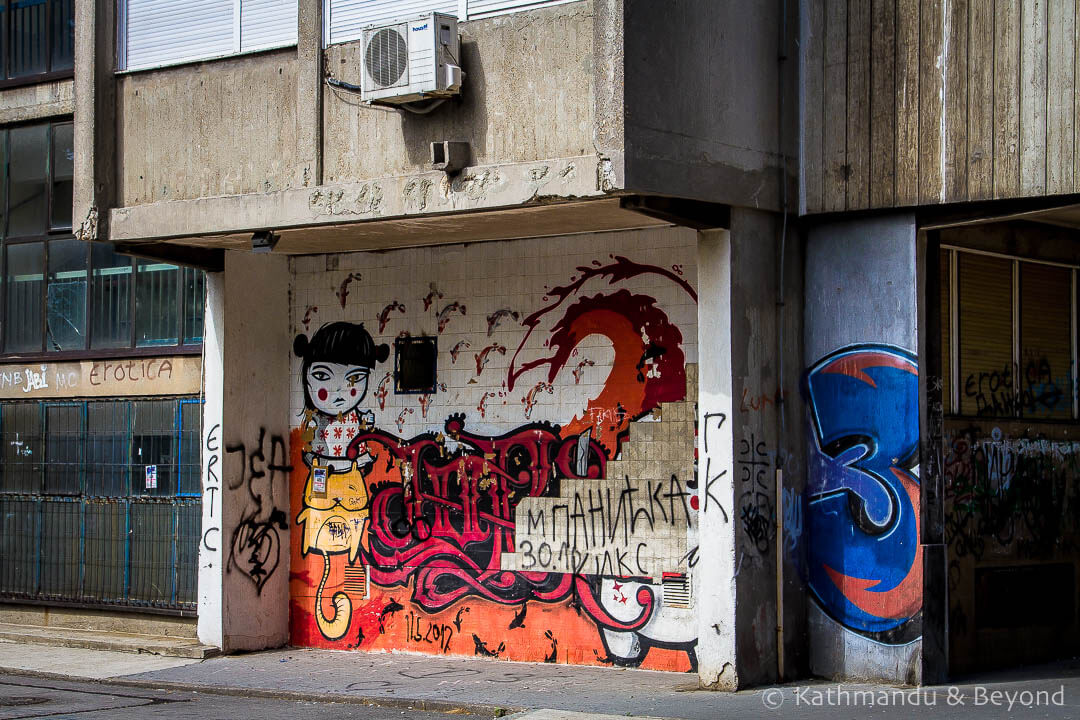
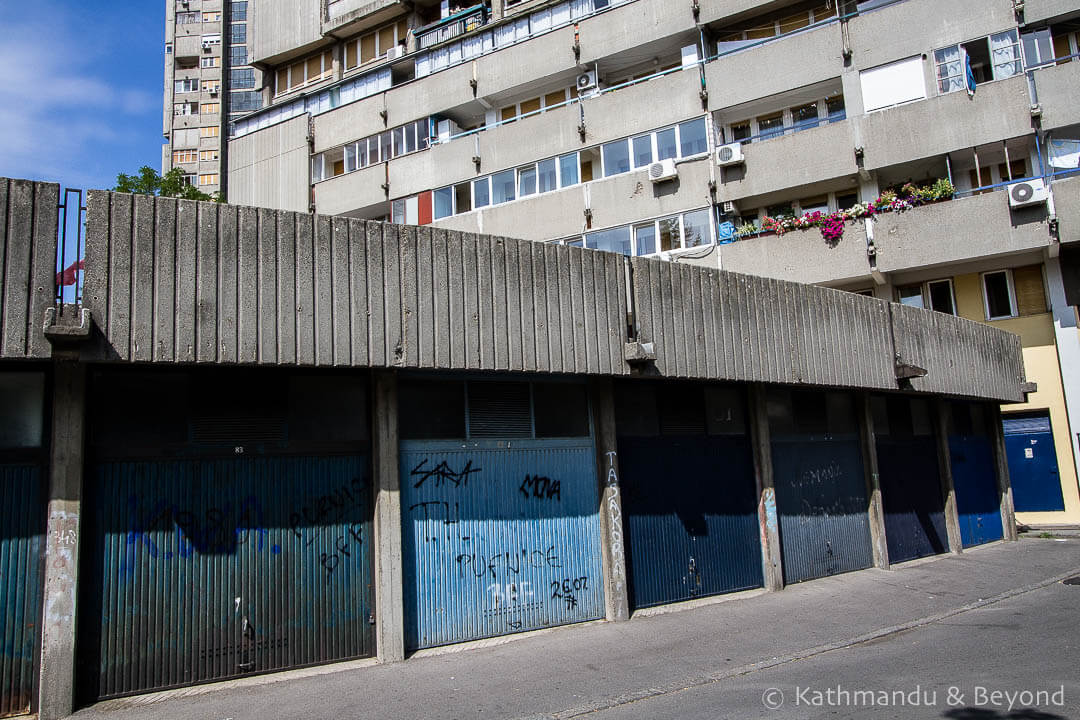
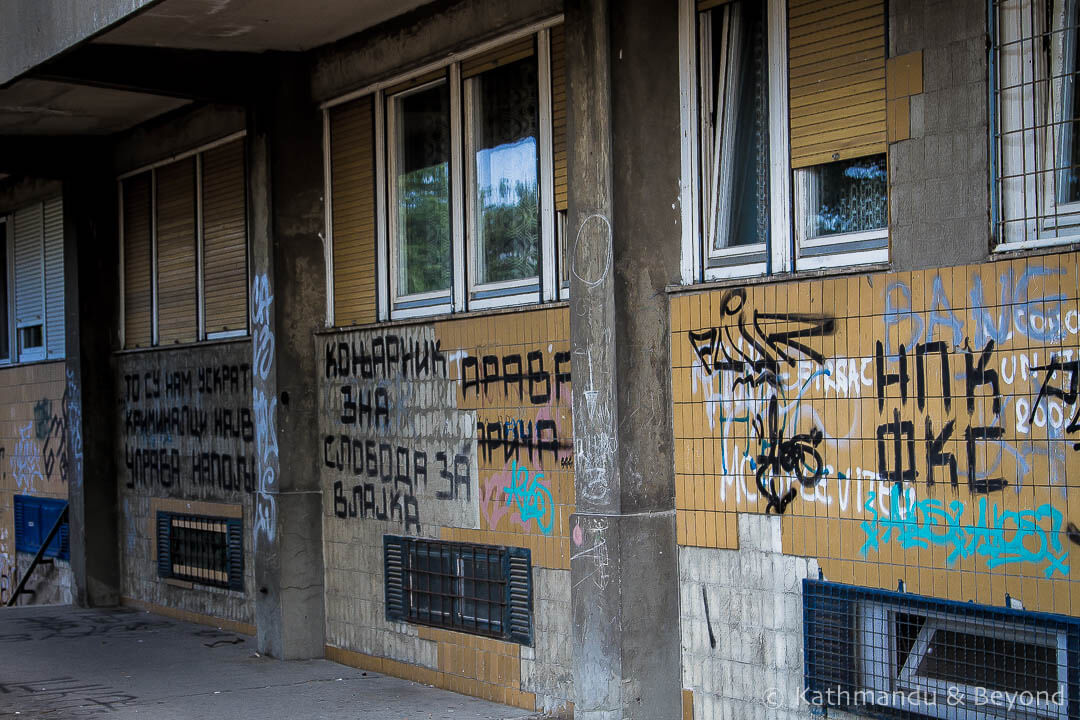
Eastern City Gate (Rudo)
What’s more, I think the attitude towards Rudo is quite different compared to the Genex Tower. Obviously, what with trying to raise money for general improvements etc., there is a sense of community among those who live in the apartments at Rudo. You don’t get the impression, either via reading online or through talking to people, that the level of disdain held by some for the Genex Tower is also directed at Rudo. I can see how Genex is easily a love it or hate it kind of place. Its stark in-your-face design is not going to be everyone’s cup of tea but with Rudo, I think it is different. The impression of curvature makes the entire complex more appealing on the eye. Moreover, the way each building is stepped softens the overall appearance and I would guess that there are more people who like the design of Rudo or, at least, are indifferent or not firmly in the hate camp than there are those who are, architecturally, a fan of the Genex Tower.
Personally, I like both but, if you asked me to choose one over the other, it would have to opt for Rudo.
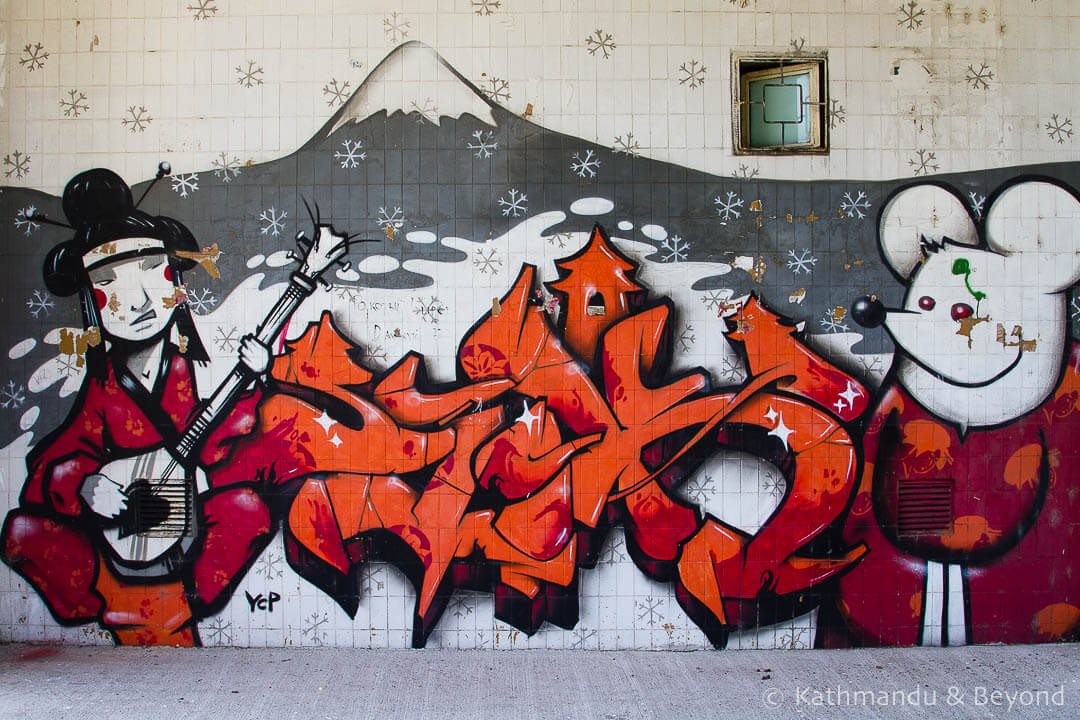
Visiting Belgrade’s Modern City Gates
The Genex Tower is a 15-minute walk from New Belgrade’s Mihajla Pupina Boulevard. There are many buses from the old part of Belgrade via Brankov Bridge that will get you close. For example, 18, 84, 88, and 601. The GPS coordinates for the Genex Tower are 44.820620, 20.405238.
Tram #7 is the best option for getting to Rudo. The GPS coordinates for Rudo are 44.785251, 20.512354.
READ MORE POSTS FEATURING SERBIA
